There have been many data standards set by various organizations
around the world. One of the most important such organization for data
standards in biological computing is the International Working Group on
Taxonomic Databases for Plant Sciences (TDWG) of the International Union of
Biological Sciences (IUBS). BG-BASE is compatible with several of these
TDWG standards, including the International Transfer Format for Botanic
Gardens Records (ITF) and the World Geographical Scheme for Recording
Plant Distributions (BRU).
See also Walter, 1996a
What makes a "standard" a standard?
Just because a standard is proposed does not mean that it becomes
a viable standard. Data standards must have widespread agreement, be applicable
to the task and to the user, be in widespread use and be widely adopted.
Ideally, they should function for both simple systems and sophisticated
systems. Finally, each standard must have a mechanism for keeping it up to
date; this is usually accomplished by having each standard published by an
organization.
Geography / Distribution |
 |
Countries - ISO
3166 |
provides a 2- & 3-letter code as well as a
numeric code for all countries of the world |
 |
BRUS (Biological
Recording Units) |
provides a worldwide geographical scheme for
recording plant distributions; a 4-tier hierarchy |
 |
POSS (Plant Occurrence
and Status Scheme) |
provides a mechanism for recording the
relationship between a plant and a place |
Nomenclature / Taxonomy |
 |
Plant names in
botanical databases |
provides the minimal set of fields to
unambiguously characterize a plant's scientific name |
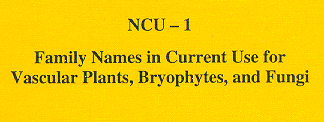 |
NCU (Names in Current Usage) |
|
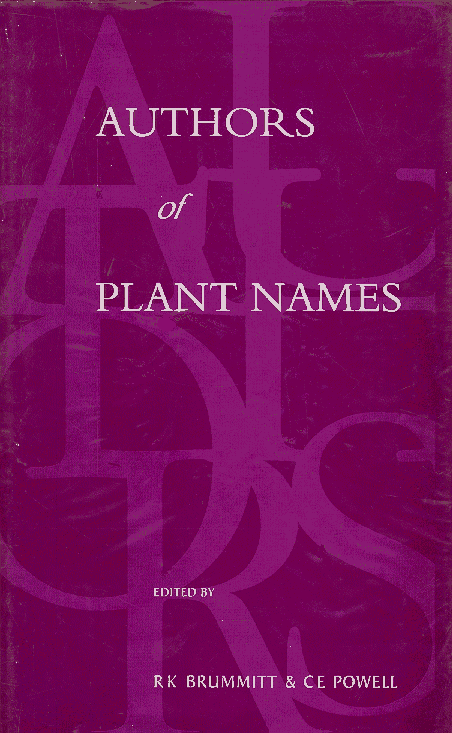 |
author
abbreviations
or from UK (via Kew) |
provides a standardized abbreviation for some
29,694 authors of scientific names for plants |
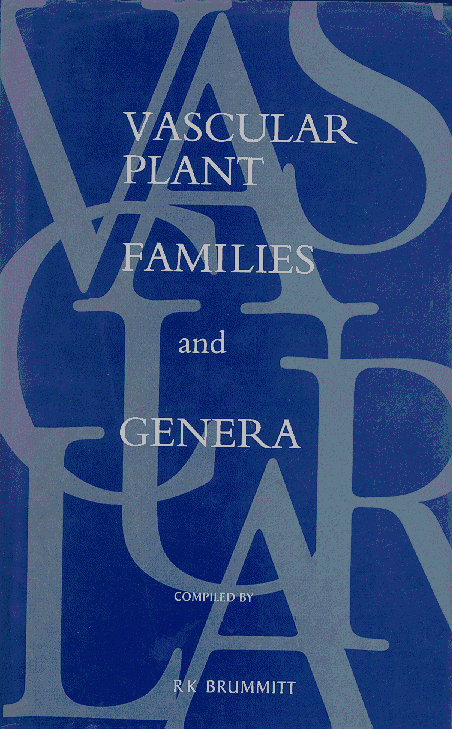 |
Genera & families |
provides a list of some 24,000 genera and 533
families of vascular plants; while this is not an official "standard", many
institutions use it as such; see also Cronquist and Dahlgren |
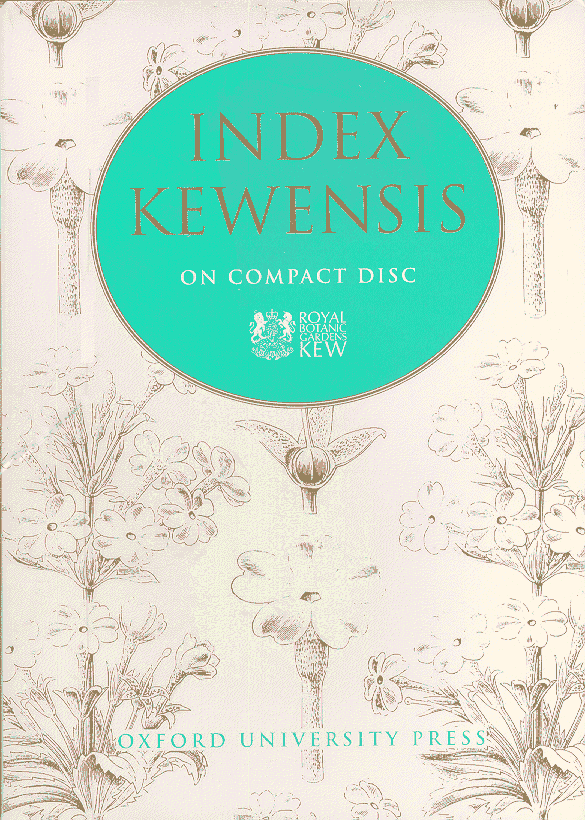 |
Index Kewensis |
now available on CD-ROM (but with more errors
than in the printed copy; see Walter,
1997), Index Kewensis provides a list of vascular plant names and
where they were published; an often misunderstood work, IK does not attempt to deal with taxonomy by providing the "correct" name for a
species |
| |
Gray Index |
provides an on-line, searchable database of all
vascular plants names for taxa described from the New World (North, Central and
South America); unlike Index Kewensis, the Gray Index has always captured
information about infra-specific taxa such as subspecies and varieties; not an
official standard but an excellent resource for New World taxa |
 |
World checklist |
IOPI (International Organization for Plant
Information) plans a world checklist of vascular plants; due to lack of
funding, relatively little progress has been made on this monumental task |
Specimens (living and preserved) |
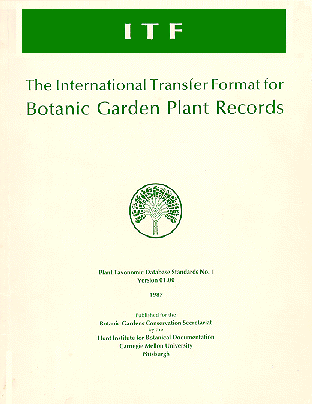 |
ITF (International
Transfer Format for Botanic Garden Records) |
provides a mechanism whereby holders of living
collections of plants can exchange information about those collections |
| |
ITF2 |
a completely re-worked version of ITF that
allows for variable-length fields and a much richer data set; currently in
draft form and as yet unratified |
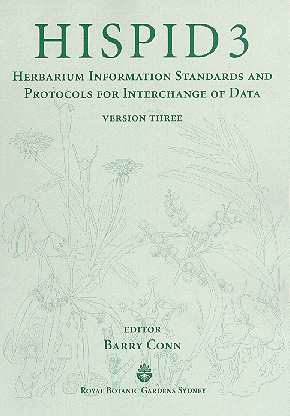 |
HISPID3
(Herbarium Information Standards and Protocols for Interchange of Data) |
provides a protocol for exchanging data between
herbaria; designed for and by the Australian herbaria, it is now becoming
increasingly used as an international standard |
Conservation |
 |
IUCN Red Data Book
categories |
provides a system of codes and definitions for
the extent of endangerment to a taxon's survival; the "original" IUCN
categories (see below) |
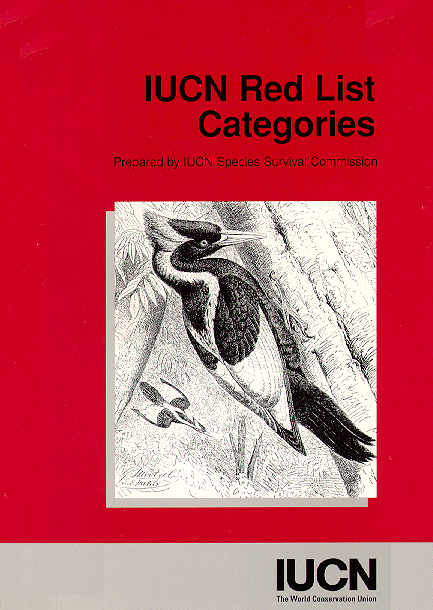 |
IUCN Red List
categories |
provides a system of codes and definitions along
with criteria for making the determinations for the extent of endangerment to a
taxon's survival; the "new" IUCN categories (see above) |
 |
TNC global ranks |
provides a system of codes and definitions for
assessing the extent of endangerment to a taxon's survival; categories include X (extinct), H (historic occurrence / possibly extinct), 1 (critically imperilled; typically 5 or fewer occurrences or 1,000 or fewer
individuals), 2 (imperilled; typically 6-20 occurrences or 1,000-3,000
individuals), 3 (vulnerable; typically 21-100 occurrences or
3,000-10,000 individuals), 4 (apparently secure; uncommon but not rare;
some cause for long-term concern, usually > 1,000 occurrences and 10,000
individuals), and 5 (secure (common, widespread and abundant) |
Descriptions |
 |
DELTA (Description Language
for Taxonomy) |
provides a mechanism for coding taxonomic
descriptions; various computer software applications exist that use DELTA
descriptions for on-line keying and key-writing |
Institutions and Collection Holders |
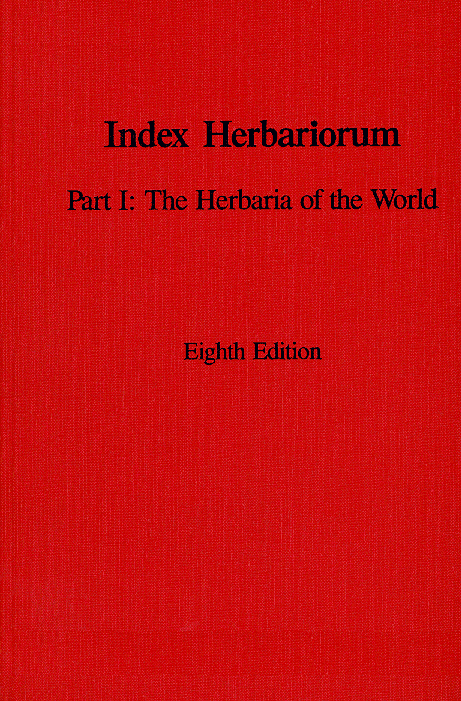 |
IH (Index Herbariorum |
provides a standard abbreviation (1-6 letters)
for the world's herbaria; in conjunction with The New York Botanical Garden
(publishers of IH), Botanic Gardens Conservation International has extended
this to include other botanic gardens that do not have a herbarium |
Character Encoding (computer) |
| |
ASCII - 7 bit or 8 bit |
the 7-bit version provides 2 to the 7th, or 128,
standard codes; of these, 96 are printable characters (all English language
letters, numbers, punctuation marks) and 32 are codes for communicating with
peripheral devices; the 8-bit version provides 2 to the 8th, or 256, codes of
which the first 128 are the same as the 7-bit version; however, there are many
"flavors" of the so-called "high order" ASCII, and thus there is no single
8-bit standard |
 |
Unicode |
provides definitions and codes for some 30,000
characters, handling virtually all human languages and writing systems; this
16-bit system contains 2 to the 16th, or 64,000, codes; compared to ASCII, any
Unicode character takes up twice as much storage space |
Bibliography |
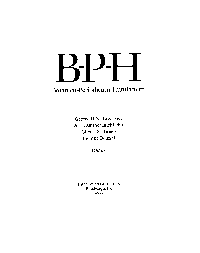 |
BPH |
standardized citations and abbreviations for
journals of relevance to botanists |
| |
TL2 |
standardized citations for published literature
useful in plant nomenclature |